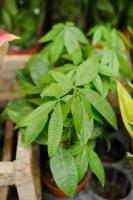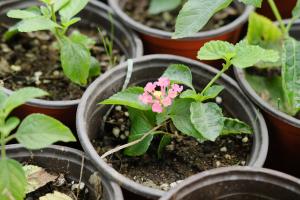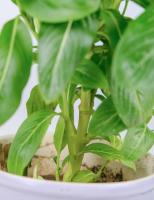How to Plant Fig Tree Cuttings
If you're a fan of figs, you may be interested in planting your own fig tree from a cutting. It's a fairly straightforward process, but there are a few important things to keep in mind. In this article, we'll walk you through some key steps for planting fig tree cuttings so you can enjoy fresh figs in your own backyard.
Preparing Your Fig Tree Cutting
Before you start planting your fig tree cutting, you first need to prepare it. Begin by choosing a healthy, mature branch from your existing fig tree. The branch should be about 6-8 inches in length and have at least four leaves attached to it.
Next, remove the bottom two leaves from the stem, leaving just two leaves remaining. Dip the end of the stem in rooting hormone powder to encourage new growth, then gently tap off any excess powder. Your fig tree cutting is now ready to plant.
Planting Your Fig Tree Cutting
Now that your fig tree cutting is prepared, it's time to plant it. Begin by filling a container with potting soil, then make a hole in the center of the soil. Carefully place your cutting into the hole, then gently press the soil down around the stem. Water the soil until it is thoroughly moist, but not waterlogged.
Next, cover the container with a clear plastic bag to create a greenhouse-like environment for your fig tree cutting. Set the container in indirect sunlight and check it daily to ensure the soil remains moist. After a few weeks, you should start to see new growth from your fig tree cutting.
Transplanting Your Fig Tree Cutting
Once your fig tree cutting has started to grow, it's time to transplant it into a larger container or directly into the ground. If you're transplanting your cutting into a container, choose a container that is at least 16 inches wide and deep. Fill the container with potting soil, then make a hole in the center of the soil. Carefully remove your fig tree cutting from its original container and place it into the new container. Gently press the soil down around the stem, then water the soil until it is thoroughly moist.
If you're transplanting your cutting into the ground, choose a sunny location that is sheltered from wind. Dig a hole that is twice as wide and deep as the root ball of your fig tree cutting. Place the cutting into the hole, then backfill the hole with soil. Press the soil down firmly around the stem, then water the soil until it is thoroughly moist.
Caring for Your Fig Tree
Now that your fig tree is planted, it's important to take proper care of it to ensure it thrives. Figs need plenty of water, so be sure to water your tree regularly, especially during hot, dry weather. Figs also benefit from regular fertilization, so consider using a balanced fertilizer every month during the growing season.
Pruning your fig tree is also important for maintaining its health and shaping it into the desired form. Wait until your fig tree has fully leafed out in the spring, then trim off any dead or damaged branches. You can also trim back any branches that are growing too thickly or crossing over each other. With proper care and attention, your fig tree should provide you with delicious figs for years to come.
In conclusion, planting fig tree cuttings is a simple and rewarding process that doesn't require much expertise. By following the above steps, you can successfully plant and care for your own fig tree at home. Remember to provide your tree with regular water, fertilizer, and pruning to ensure it stays healthy and productive. Happy planting!

 how many times do yo...
how many times do yo... how many planted tre...
how many planted tre... how many pine trees ...
how many pine trees ... how many pecan trees...
how many pecan trees... how many plants comp...
how many plants comp... how many plants can ...
how many plants can ... how many plants and ...
how many plants and ... how many pepper plan...
how many pepper plan...






























